Wellness for One

You can find commentary on both the downsides and the upsides of marriage pretty much anywhere: television shows, movies, stand-up comedy routines … but how much truth lies in those statements? Is there but a shred – or a mountain – of evidence to back any of them up?
While it’s difficult to nail down a specific percentage, between 40 and 50 percent of married American couples go through a divorce, and another 63.5 percent of people aged 18 or older were unmarried as of 2016. With separation being so common and more than half of adult Americans never getting married, we wanted to dig into the effects of one’s marital status on health and happiness.
Were married people’s lives an ongoing reflection of betrothed bliss? Did divorced individuals ramp up their satisfaction upon leaving their marriage? Have singles cracked the code? Read on to find out.
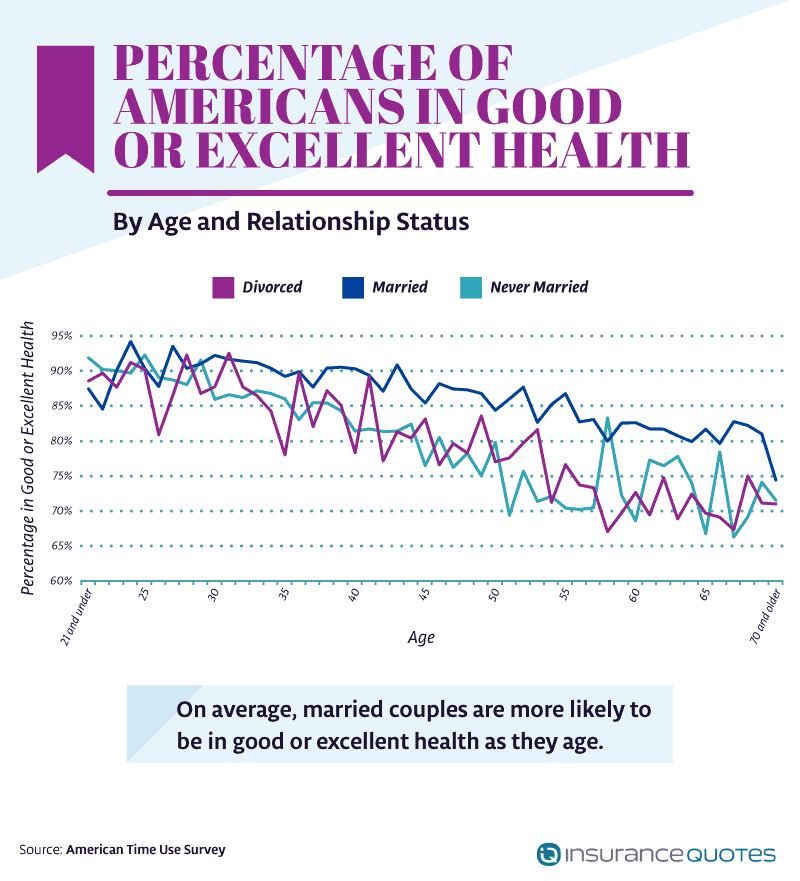
With the passage of time came decreasing health, no matter the marital status. While this chart ebbed and flowed for married, divorced, and single individuals to varying degrees, the line representing married folks tended to hover above the other two, especially in middle age.
That’s good news for the partnered crowd: One study found that being married in middle age could prevent premature death.
While the purple line, representing divorced respondents, experienced the highest number of aggressive peaks and valleys, the single largest jump on the chart was expressed in the never married group: Between ages 57 and 58, respondents’ health increased by 13 percent, only to drop another 11 percent just one year later.
Interestingly enough, married folks aged 21 or younger kicked off the chart with the lowest health score of the three groups, with 87 percent of them being in good or excellent health. Meanwhile, 89 percent of divorced respondents of the same age were in good or excellent health, compared to 92 percent of people who were never married.
By the time they were 70 and older, married people came out on top, with 74 percent of respondents in excellent health, compared to 71 and 72 percent as exhibited by the other groups. That being said, married respondents aged 70 or older experienced a substantial drop (7 percent) in their health score just one year prior, while the other two groups fluctuated by 2 and 0 percent respectively.
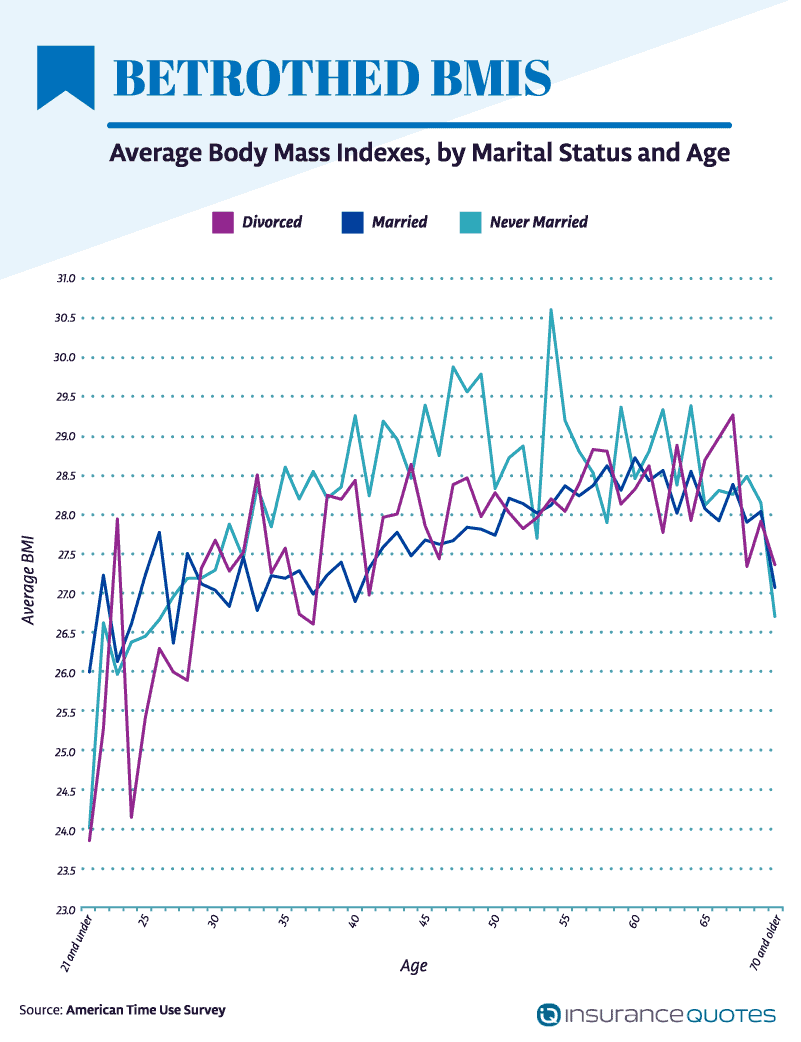
While respondents’ BMIs were fairly similar overall regardless of marital status, those who were married did have a slight edge, at 27.6 on average. Individuals who had never been married were the heaviest, with an average BMI of 28.5, with divorced people in the middle at 28.
Married people in their early- to mid-20s were the group to buck this trend. According to the data, 22-year-olds who were either married or divorced had BMIs hovering around 24, whereas their married peers hit 26. It was only at age 29 that married individuals began to consistently exhibit BMIs that were lower than the other two groups.
The highest observed BMI was among married respondents who were age 54, topping the chart at 30.6 on average. Middle age has been known to kick off weight gain for many people, sometimes due to hormonal changes from menopause. In general, aging is associated with a lower resting metabolic rate, which means fewer calories are burned during periods of inactivity.
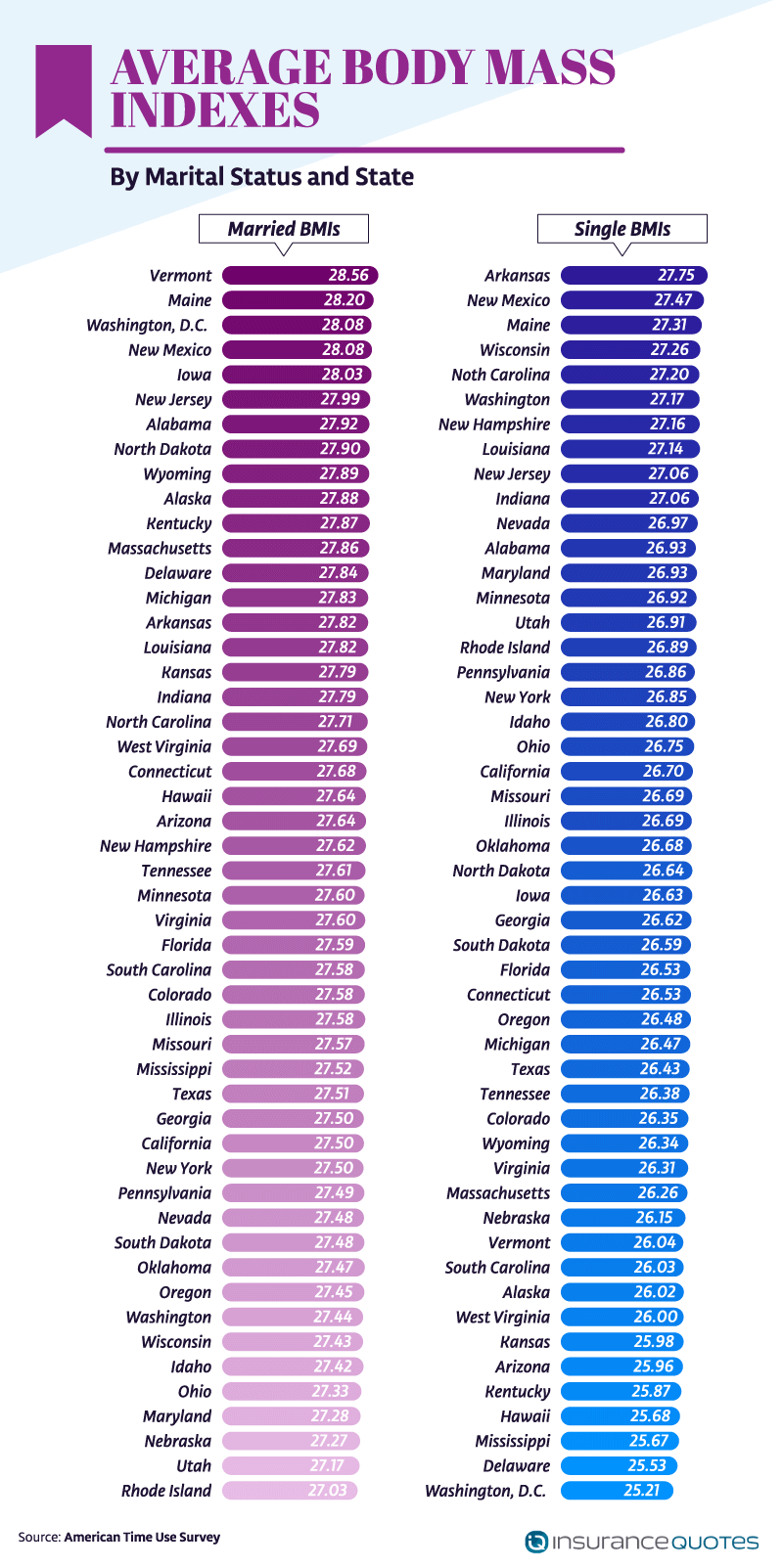
There seemed to be no great divide between the BMIs of married people and single folks, so members of both camps can rejoice! However, unmarried respondents exhibited a wider range of BMIs that dipped into lower numbers than their married counterparts: Singles in all 50 states exhibited average BMIs of 25.21 to 27.75, while coupled respondents were much more range bound hovering between 27.0.03 and 28.56.
The long-standing trope is that people “let themselves go” after getting married, fancying themselves safe in their couplehood, no longer looking to court a mate with their good looks. One study involving 9,000 American men discovered a significant correlation between marriage and weight gain, with parenthood at the root of further spikes in weight.
Married people in Vermont led the pack for highest BMI, while singles were topped out by Arkansas inhabitants. New Mexico, Maine, and New Jersey were the only three states that made the top 10 among both camps.
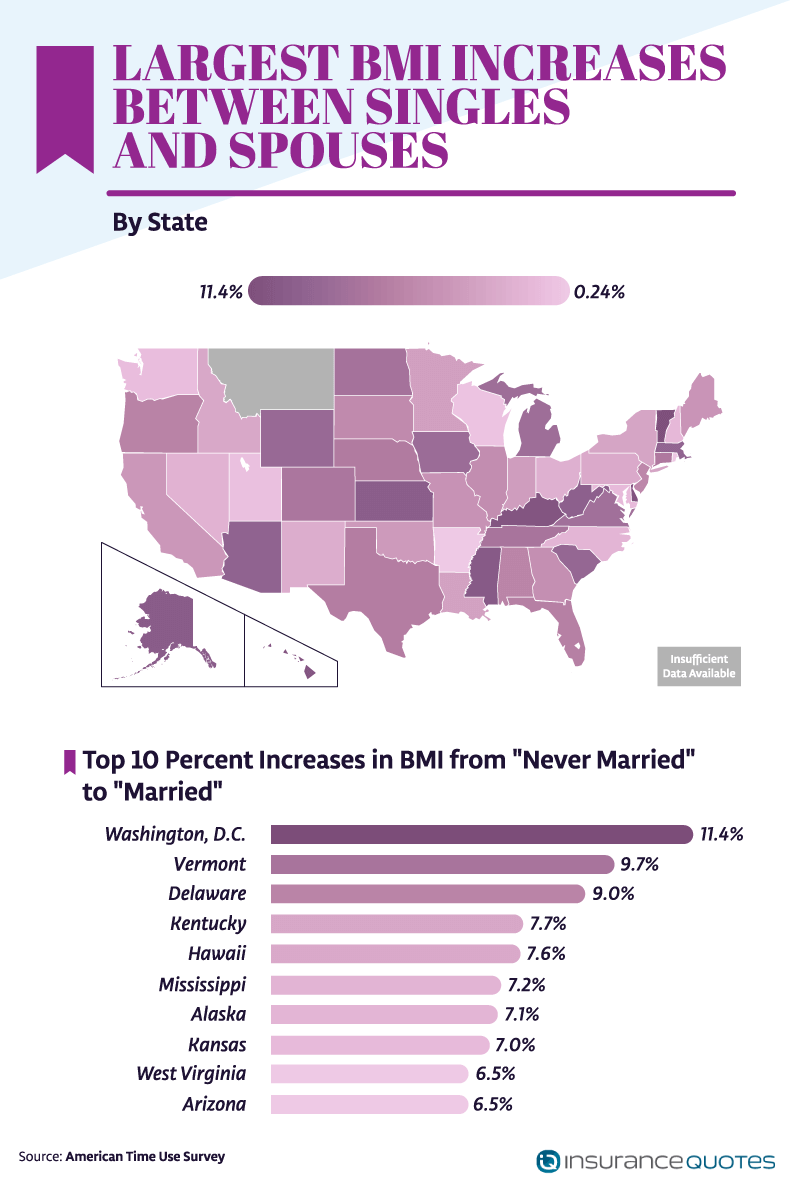
We’ve all experienced weight fluctuation at one point or another. Whether our scale has wagged its proverbial finger at us after a holiday season marathon of gluttony or during a particularly stressful quarter at work (if you’re a stress eater, there are ways to combat the habit), weight can come and go.
That being said, a person’s wedding day often marks the start of a significant uptick in waist size. Residents of Washington, D.C., experienced the most significant gains of all, increasing their BMI by 11.4 percent after walking down the aisle.
Vermont residents – who topped the list of highest BMIs among married folks – were next in line with a 9.7 percent gain, followed closely by people living in Delaware at an even 9 percent.
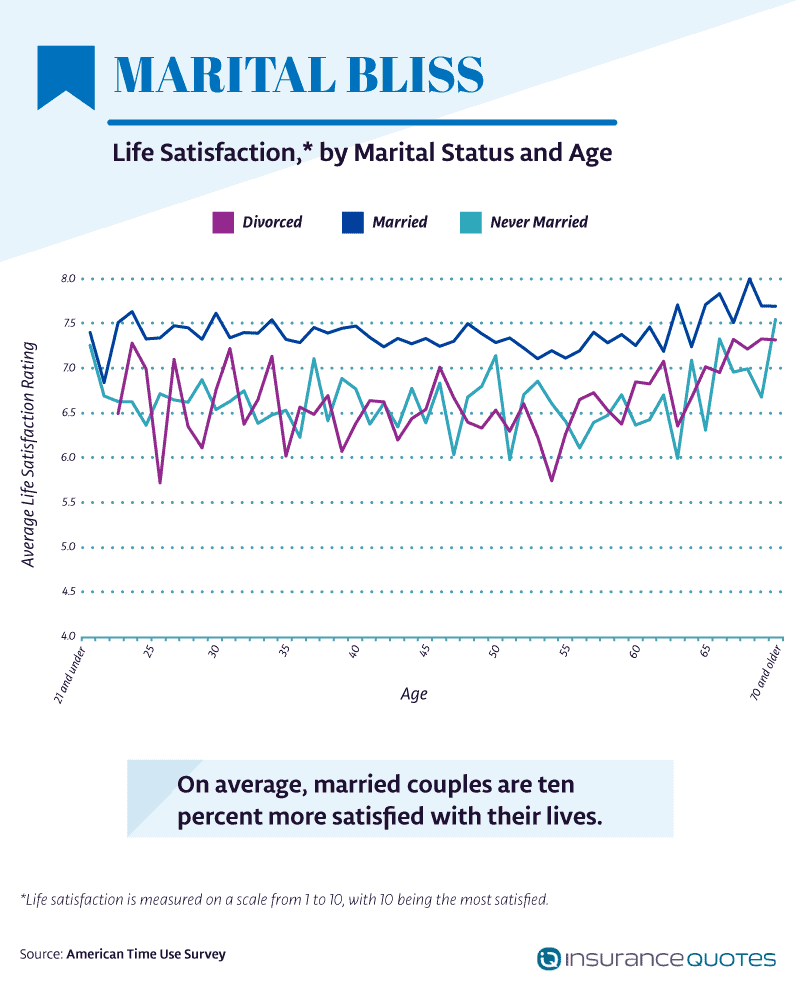
Marital bliss indeed: On a scale from 1 to 10, married respondents were almost one full point happier than their unmarried and divorced counterparts.
It turns out that pairing off with a lifelong companion has its perks, including, but not limited to, a lowered chance of depression, a longer life, and a higher likelihood of surviving a grave illness or major surgery. According to our survey, a higher rate of overall life satisfaction is also a reasonable expectation.
No matter the age, from 22 years old to over 70, the rate of reported satisfaction among married people never dipped below that of our divorced or never married respondents. The betrothed reported satisfaction levels that fluctuated between 7.4 to 8.1 (with a notable series of spikes in old age), whereas the two other groups experienced larger, more frequent fluctuations.
Divorced people bottomed out at 5.8 at age 54 and were happiest in their old age, with a 7.3 rate of satisfaction at age 70 and older. Meanwhile, those who never married were at their happiest in their youth and old age.
Conclusion
Our takeaway: If you like it (and want to live a long, healthy, satisfied life), then you should put a ring on it. Overall, our married respondents were just a little happier and a little lighter than those who were never married or divorced; however, that has no bearing on each person’s desire and ability to live their best life.
Aside from having a tangible impact on your life at large, marriage also affects the way your insurance operates. From car insurance rates to life insurance, there are many factors to consider when your marital status changes. Let insuranceQuotes be your guide when it comes to navigating the elaborate world of insurance from single life beyond.
Methodology
To analyze various health-related factors against several marital statuses, we used the Bureau of Labor Statistics-sponsored American Time Use Survey from 2006 to 2016. The marital statuses were also filtered by location to analyze state-by-state differences. Results were weighted using weights provided by the Bureau of Labor Statistics for the American Time Use Survey. Average body mass indexes, however, were not weighted.